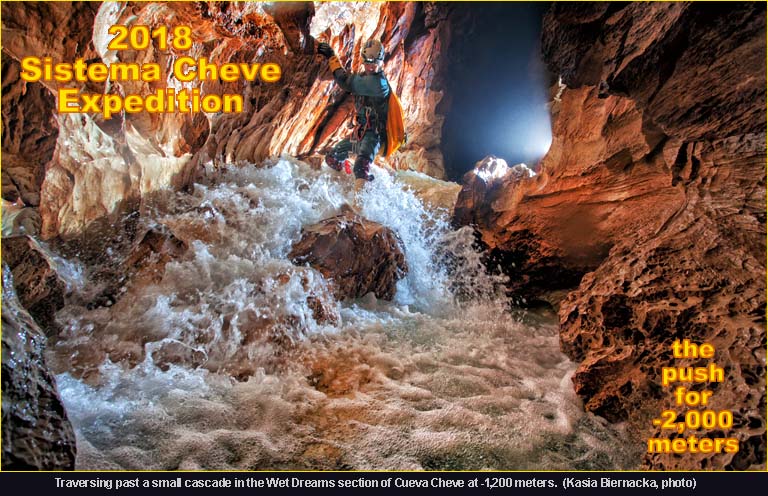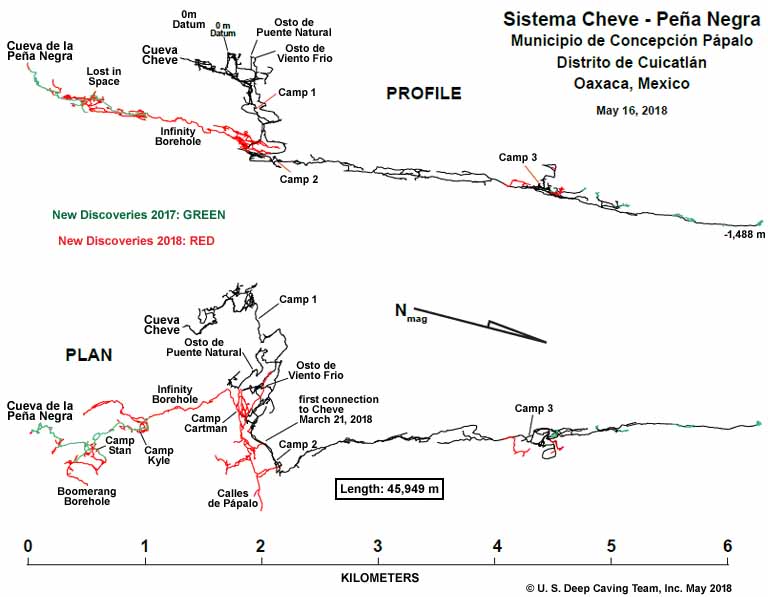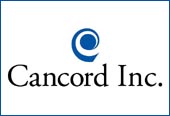 | ||
           2026 Sistema Cheve
|
 2018 Sistema Cheve Expedition
Read the expedition executive summary here. Background (en Español) In the spring of 2017 a three month expedition took place at Cueva Cheve, in northeastern Oaxaca, México with the intention of extending the cave beyond the limit of exploration achieved in 2003. A plan was developed to place a team of four divers at the limit of exploration, and beyond Sump 1. The expedition was mainly focused on supporting those divers, but others on the team also climbed to reach high level passages that might bypass the underwater tunnels altogether. It was the first time in 14 years that the bottom of the cave had been visited. The detailed objectives for that project are described on the 2017 Sistema Cheve Expedition page. A very brief recounting of the 2017 expedition is as follows: after 10 weeks of sustained effort we had failed to find a continuation of the main river passage beyond Sump 2 in Cueva Cheve. At that point we began to derig the cave and remove all of the diving equipment. However, during the last two weeks of the expedition two extraordinary discoveries were made. The first was almost at the bottom of the cave. An obscure tunnel led in a direction opposite of what we had been expecting. It carried neither wind nor water and it was ascending. All of these were symptoms of either a dead end tunnel or a parallel route from a place higher in the cave. But in an extraordinary turn of events a "drainage divide" was discovered, where, after ascending for a substantial distance, the passage suddenly began descending in a direction perpendicular to the main axis of the fault on which Cueva Cheve is predominantly formed. And, most importantly, commensurate with this change in direction, a strong wind suddenly appeared, going into this new tunnel. The presence of strong air flow in this location was a revelation, since the air flow in Cueve Cheve had mysteriously disappeared in 1989 near what is now the location of Camp 3. At about the same time of this discovery, and with an equal level of surprise, the entrance to a major new cave - known as Juniper/CL6 - was discovered some two kilometers east of the main entrance to Cueva Cheve. At the end of the expedition the last exploration push discovered 3.5 kilometers of tunnel with a staggering cross section of 60 meters square. We ran out of rope looking down into even larger passage. There are no tunnels in Cueva Cheve - long considered the largest cave in the Sierra Juárez - that match the dimensions of those seen in Juniper-CL6. So there is some speculation that Juniper/CL6 may be the "master" cave in the Sierra Juárez. The 2017 expedition thus concluded with two of the most significant cave discoveries in México in decades. The results of the expedition are detailed in this Executive Summary. (pdf) Objectives for 2018 We have assembled a 58 person team from 8 countries for the return to Cheve and to CL6 in 2018. The advance team will leave Texas on February 26th, 2018, with the plan of establishing basecamp near the entrance of Juniper/CL6 by the middle of the first week of March. For the following month the majority of the team will work on the rigging, exploration, and mapping of the new cave. Towards the end of March a small contingent of the team will rig Cueva Cheve and, at the beginning of April, begin working from Camp 3 on the new tunnel discovered in 2017. Unlike the 2017 expedition, we presently are presented with continuing air-filled passage and no requirements for diving equipment, which will greatly speed the exploration work and reduce the amount and weight of the equipment that must be transported underground. While it is difficult to predict the results of what will happen in 2018, we are cautiously optimistic that the new tunnel at the bottom of Cueva Cheve will lead to vastly greater depths in that cave. The presence of the extremely forceful wind means that there is a very large volume of open, air-filled cave proceeding to much greater depths. Our goal is to crack -2,000 meters depth in 2018. Juniper/CL6 is a "wild card". If it proves to be the master cave in the Sierra Juárez we will be looking at decades of work to explore it and it may take several expeditions just to reach the remoteness and depth that have been achieved in Cueva Cheve after 30 years of effort. But the challenge is extraordinary and the call to exploration is strong. One way or another 2018 will be a watershed year for exploration of Sistema Cheve.  2018 Sistema Cheve Expedition Results At the end of the 2017 Cheve expedition an extraordinary discovery was made some three kilometers east of the main entrance to Cheve. The new find was initially dubbed "CL6" by the reconn team. Further discussions with locals in the municipality revealed that the place had a proper geographical name, so the new cave became "Cueva de la Peña Negra" - Cave of the Black Cliff. The final push in 2017 had left off in 40 x 40 meter borehole with strong wind so there was no question of a return. The lead team left Austin on February 25, 2018 and a team of 40 people from 6 countries participated. The final derig crew returned to Austin on April 30, 2018. Because of an equally important discovery of a tunnel carrying strong wind near the bottom of Cheve both caves were rigged in 2018, consuming some 8,000 meters of rigging. A total of six underground camps were set (3 in each cave) and it was not uncommon to have only 3-5 people in basecamp and the remainder of the team spread across 3 or more underground camps. All camps were linked to basecamp with a single wire Michie phone system so that efforts could be coordinated daily. The result of this was that an extraordinary amount of cave was discovered and mapped in 2018. A total of 13.5 kilometers of new cave - the vast majority of which was borehole measuring 40 x 40 meters or larger - was added to the system, most of that in Peña Negra. The depth of Peña Negra reached 798 meters before not one but four widely separated connections were made to Cueva Cheve. The first connection was made near Camp 2 in Cheve just above the East Gorge in a fossil gallery first explored in 1988. With the connections the length of Sistema Cheve increased to 45,949 meters. The profile of the connected cave system now reveals clearly that the upper portion of Cheve, known for over 30 years now, is just a side passage to the Peña Negra. The lower section of Cheve also saw intense exploration effort, with 1.1 kilometers of new cave discovered this year but no new depth.  | |
| Copyright © 2025 U.S. Deep
Caving Team, Inc. All rights reserved. Todo el contenido tiene derechos de autor del U.S. Deep Caving Team. Todos los derechos reservados. No portion of these pages may be used for any reason without prior written authorization. | ||










